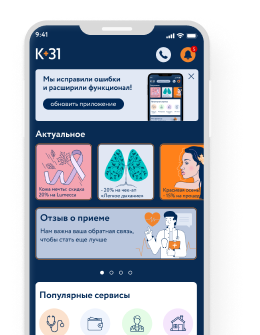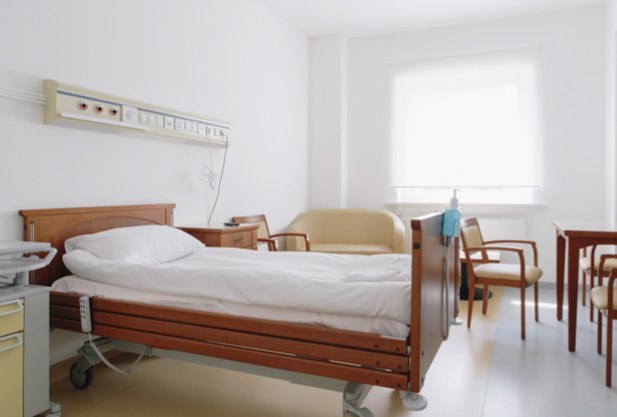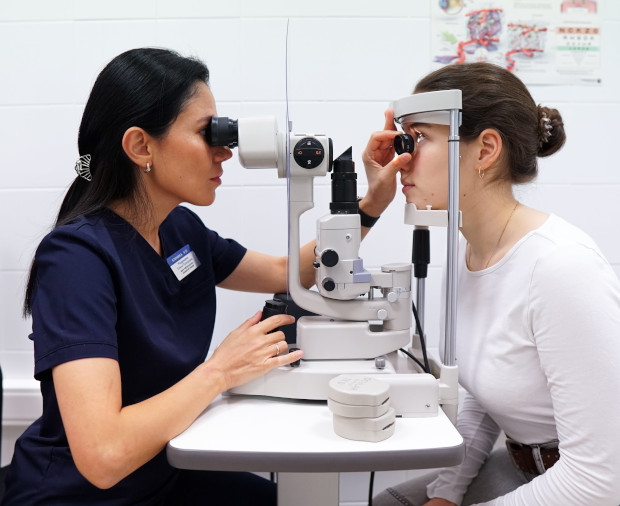Заболевания поджелудочной железы
Поджелудочная железа – непарный железистый орган пищеварительной системы, который вырабатывает панкреатический сок с большим количеством ферментов. Одновременно она выполняет эндокринную функцию, вырабатывая гормоны инсулин и глюкагон. Нарушения функционирования этого органа нередко приводят к развитию серьезных болезней поджелудочной железы, многие из которых характеризуются стремительным, злокачественным протеканием.

специалисты

оборудование

лечения

Панкреатит
Панкреатит – это воспалительное состояние поджелудочной железы. Он бывает острым и хроническим. Заболевание развивается на фоне следующих причин:
- Злоупотребление алкоголем и вредной тяжелой пищей
- Наличие конкрементов в желчном пузыре
- Метаболические нарушения
- Бесконтрольный прием антибиотиков, противовирусных лекарств и препаратов химиотерапии
Главным симптомом острого панкреатита является выраженный болевой синдром в верхней части живота. В зависимости от формы и стадии панкреатита он может отдавать в спину или грудную клетку.
Среди дополнительных симптомов панкреатита следует выделить тошноту и рвоту, не приносящую облегчения, а также лихорадку и учащенное сердцебиение. При хроническом воспалении поджелудочной железы наблюдается ухудшение общего состояния, сопровождающееся стремительной потерей веса и проблемами со стулом.
Диагностика панкреатита
Как проверить поджелудочную железу? Установление диагноза начинается с анализа симптомов и истории болезни пациента. Для измерения уровня ферментов поджелудочной железы врач выдает направление на лабораторное исследование крови и мочи.
Уточнить размер и степень повреждения органа позволяют такие методы диагностики как УЗИ, КТ и МРТ.
Особенности терапии
План лечения поджелудочной железы при панкреатите зависит от его формы и степени тяжести. Этапы терапии при остром типе заболевания выглядят так:
- Устранение болевого синдрома
- Диета (требуется для облегчения работы поджелудочной железы)
- Инфузионная терапия
- Применение антибиотиков (при подозрении на инфекцию)
Терапия хронического панкреатита включает в себя лечебную диету, прием анальгетиков и препаратов, способствующих восполнению недостающих пищеварительных ферментов. При тяжелых поражениях органа требуется операция (обычно назначается лапаротомное или пункционно-дренирующее вмешательство).
При своевременном обращении к врачу прогноз после лечения панкреатита благоприятный. В противном случае развивается дисбактериоз кишечника, сахарный диабет или онкология. На терминальной стадии болезни существует риск возникновения перитонита.
Рак поджелудочной железы
Причины развития заболевания
Риск развития онкологии повышен у людей, страдающих сахарным диабетом 2 типа. К остальным провоцирующим факторам относятся:
- Лишний вес (в группе риска находятся люди, имеющие жировые отложения в области живота)
- Курение
- Злоупотребление спиртными напитками
- Заболевания печени и желчного пузыря (цирроз, ЖКБ)
- Хронический панкреатит
В группу риска также входят мужчины старше 45 лет. Это обусловлено вредными привычками и неправильным питанием.
Симптомы онкологии
Признаки рака поджелудочной железы часто неспецифичны. Именно поэтому его своевременное обнаружение часто осложняется. К возможным начальным проявлениям заболевания следует отнести:
- Болевой синдром (при поражении головки - под правым ребром, хвоста - в верхней части живота слева. Боль опоясывающего характера наблюдается при раке всего органа), который уменьшается при лежании на спине
- Постепенное снижение веса. Сочетается с тошнотой, рвотой и общей слабостью
При распаде опухоли происходит интоксикация. На этом фоне появляются специфические симптомы – резкая потеря веса, повышение температуры тела и отвращение к мясной пище. Допускается появление асцита и кровотечения.
Диагностика
Как проверить поджелудочную железу? Процесс диагностики рака и начинается с анализа симптомов и визуального осмотра. Далее специалист направляет пациента на лабораторные анализы и инструментальные исследования (УЗИ, КТ, МРТ). Также для подтверждения диагноза требуется биопсия.
Особенности лечения
Чем лечить поджелудочную железу при выявлении онкологии? Если метастазы отсутствуют, проводится операция. Основные виды хирургического вмешательства:
- Операция Уиппла (панкреатодуоденэктомия)
- Дистальная панкреатэктомия
- Тотальная панкреатэктомия
- Нано-нож (применяется при неоперабельности злокачественного новообразования)
После оперативного вмешательства пациенту нужно пройти курсы химио- и радиотерапии. Одновременно ему назначается специальная диета и постоянный прием панкреатических ферментов в виде таблеток.
Лечение в клинике «К+31» в Москве: преимущества, условия приема
В клинике "К+31" в Москве работают только квалифицированные врачи с многолетним практическим опытом, которые быстро выявляют болезни поджелудочной железы, проводят безопасное и эффективное лечение.
Мы предлагаем:
- Индивидуальный подход к каждому пациенту
- Современные методы диагностики и лечения
- Комфортные условия пребывания в клинике
Попасть на прием к доктору можно по предварительной записи.
Зарезервировать время для визита вы можете на нашем сайте или по телефону. Для этого вам потребуется сообщить ваши ФИО и контактный телефон.
При возникновении любых вопросов свяжитесь с нами по телефону: +7 (499) 999-31-31.
Администратор клиники оперативно вас проконсультирует и запишет на прием в наиболее удобное время.


Такая награда выдаётся клиникам с самым высоким рейтингом по оценкам пользователей, большим количеством обращений с данной площадки, при отсутствии критичных нарушений.

Такая награда выдается клиникам с самым высоким рейтингом по оценкам пользователей. Она означает, что место знают, любят и сюда точно нужно зайти.

Портал ПроДокторов собрал 500 тысяч отзывов, составил по ним рейтинг врачей и наградил лучших. Гордимся, что среди награжденных есть наши врачи.
Запишитесь на прием в удобное время на ближайшую дату
Стоимость
Другие услуги
Отзывы 10

































Где находится и как болит поджелудочная железа
Где находится поджелудочная железа? Этот орган расположен в верхней части брюшной полости. Он прилегает непосредственно к желудку и первому отделу тонкого кишечника (двенадцатиперстной кишки). Поджелудочная железа имеет форму удлиненного листа и тянется от области расположения селезенки до центральной части тела, где соединяется с печеночной тканью.
Одним из наиболее часто встречающихся признаков поражения ПЖ считается боль в верхнем отделе живота. Иррадиирующий в спину или область грудной клетки, болевой синдром бывает острым и тупым, постоянными и приступообразным. Иногда он проходит сам, но чаще исчезает только после приема лекарств.